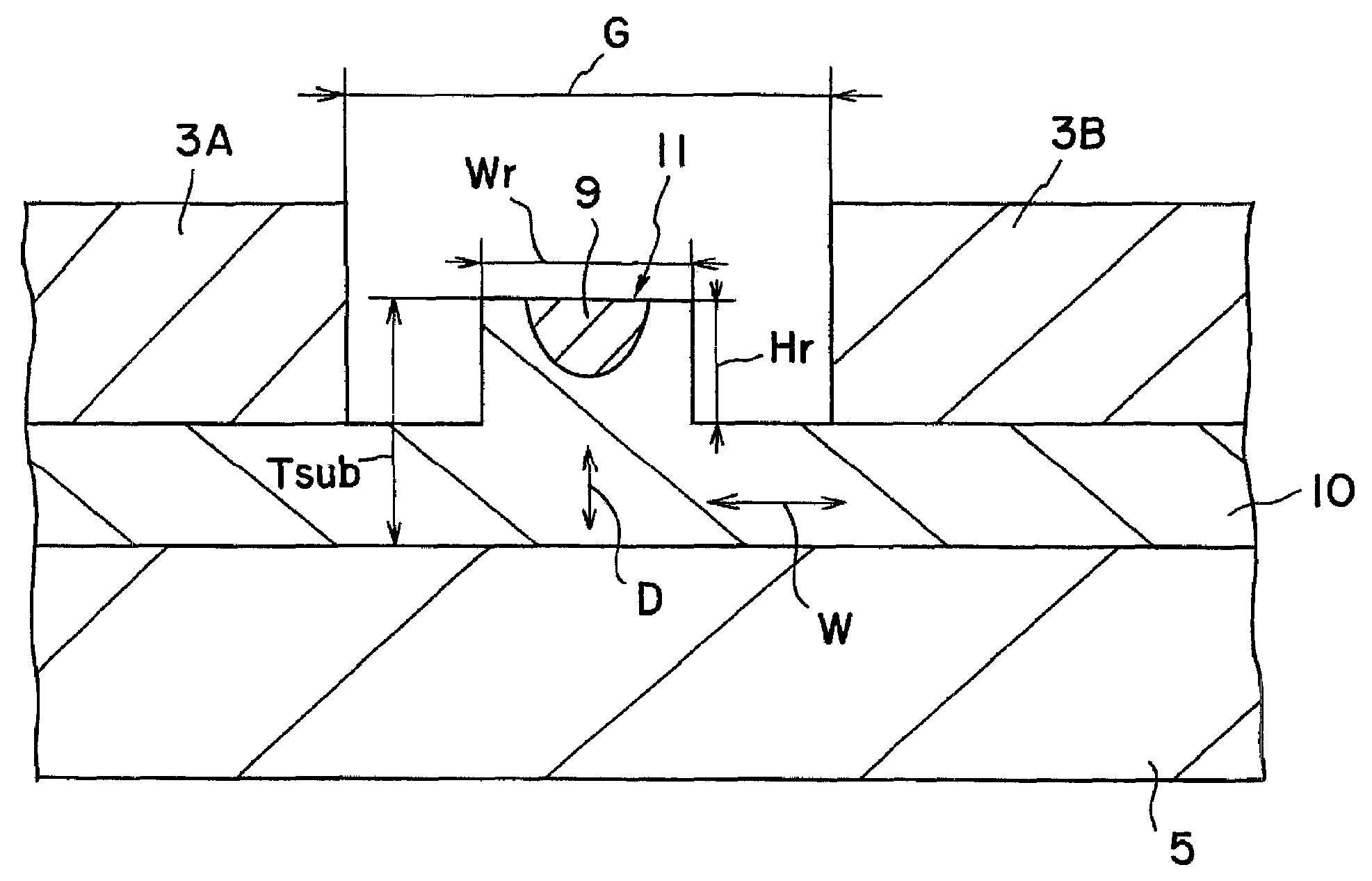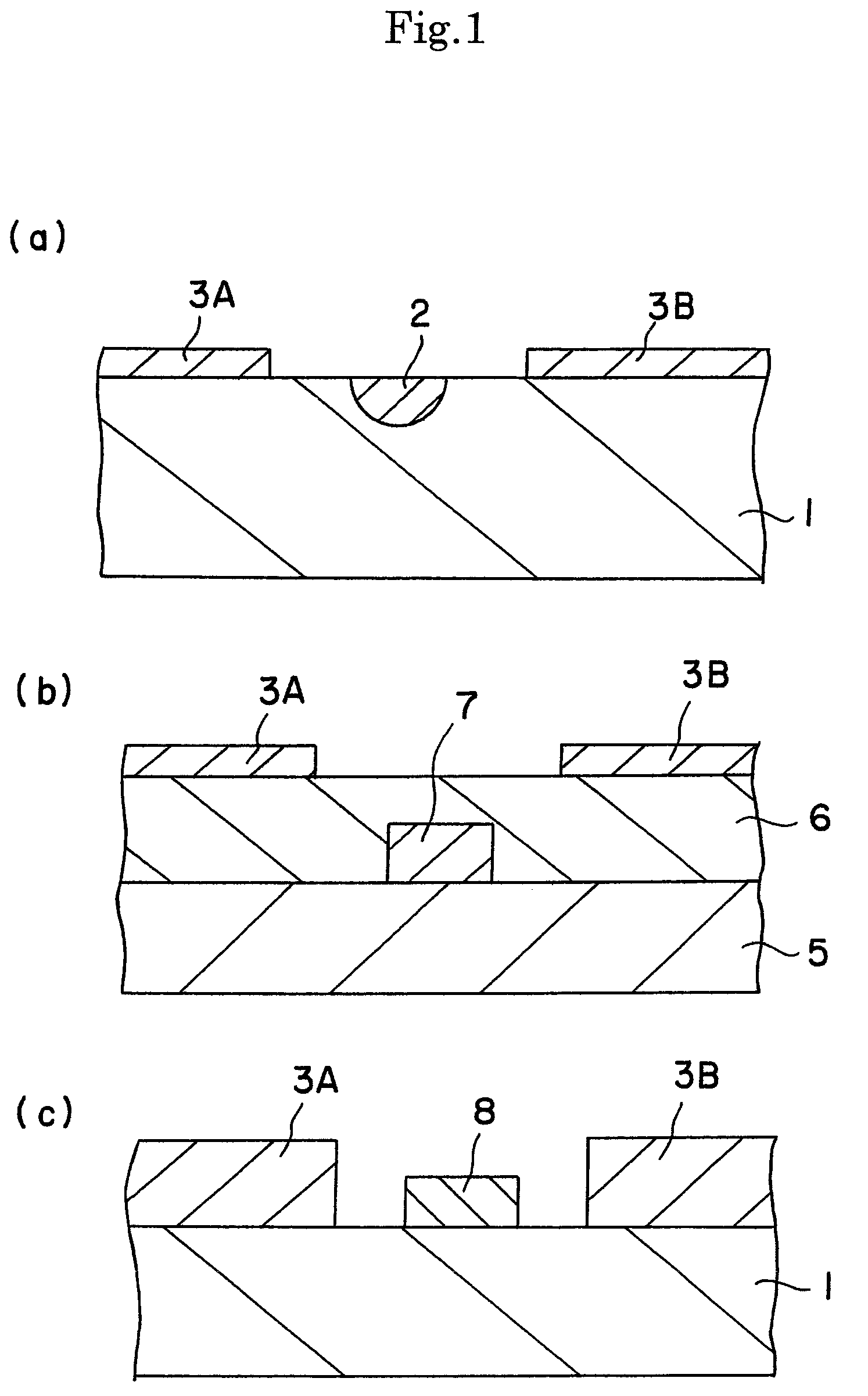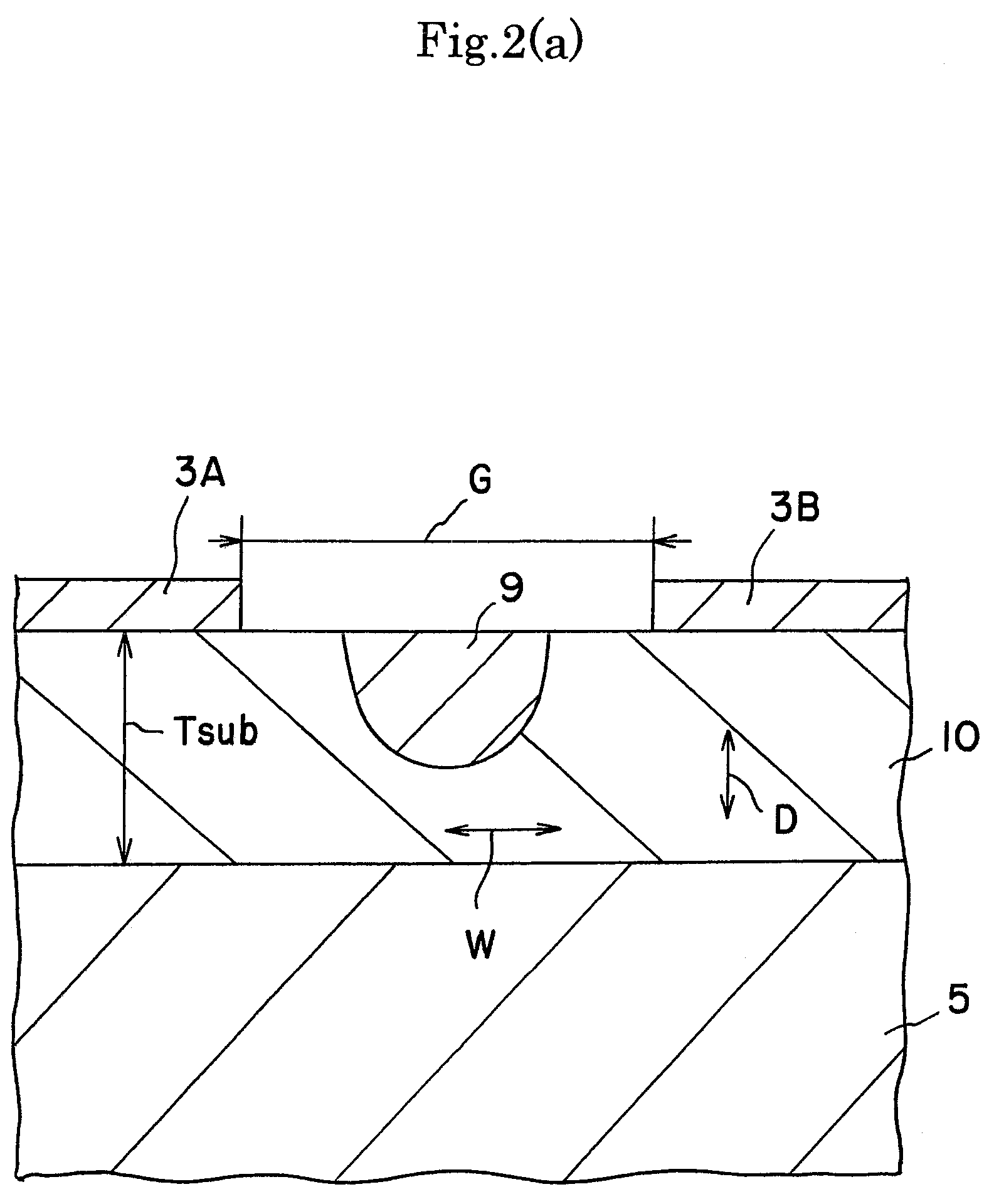Optically functional device
a functional device and optical waveguide technology, applied in the field of optical functional devices, can solve the problems of difficult to further reduce the driving voltage vl, device properties, etc., and achieve the effect of reducing the spot size of the optical waveguid
- Summary
- Abstract
- Description
- Claims
- Application Information
AI Technical Summary
Benefits of technology
Problems solved by technology
Method used
Image
Examples
experiment 1
(Experiment 1)
[0075]The optical modulator 1 shown in FIG. 2 (a) is produced. Specifically, a substrate composed of a 3-inch X-cut wafer (LiNbO3 single crystal) is used, and an optical waveguide 3 of Mach-Zehnder type is formed on the surface of the wafer, by titanium diffusion process and photolithography method. The thickness Tti of the titanium layer before the diffusion is made 0.08 μm and the width Wti is made 7 μm for making the confinement of light weaker compared with that in prior arts. Further, the treating temperature during the titanium diffusion is made 1050° C.
[0076]CPW electrode pattern is then formed by plating process. The gap “G” between the signal electrode 3B and ground electrode 3A is made 40, 30, 25, 20, 15, 10, 5 or 2 μm and the electrode length is made 35 mm. Then, for thinning, a dummy substrate is adhered to a polishing surface plate, and the modulator substrate is adhered thereon with a thermoplastic resin with the electrode face orientated downwardly. Furt...
experiment 2
(Experiment 2)
[0080]The optical modulation device of FIG. 2 (a) was produced by the same procedure as the experiment 1, under the conditions shown in each example of FIG. 9. However, the thickness Tti of titanium layer for the diffusion of titanium was made 0.06 μm, and the width Wti was made 5 μm. The thickness Tsub of the ferroelectric thin layer was changed in a range of 15 to 2 μm in addition to 500 μm. FIG. 9 shows the relationship of the electrode gap “G” and the driving voltage Vπ·L. According to the present example, the amount of titanium for the titanium diffusion was smaller than that used in the experiment 1, so that the confinement of light was relatively weak.
[0081]In the case that the substrate thickness was 500 μm, the spot size Dyo in the direction of depth of the propagating light was about 100 μm, and the equivalent refractive index Neff of the optical waveguide was 2.1371, which was slightly larger than the refractive index Nfs of 2.137 in the non-diffused portion...
experiment 3
(Experiment 3)
[0082]The optical modulating device was produced under the conditions shown in examples of FIG. 10, by the same procedure as the experiment 1. However, the thickness Tti and width Wti of the titanium layer for the titanium diffusion were changed as shown in FIG. 10. FIG. 10 shows the relationship between the optical spot size in the direction “W” of width and the substrate thickness Tsub. FIG. 11 shows the relationship between the optical spot size in the direction “D” of depth and the substrate thickness Tsub.
[0083]In the case that Tti is 0.08 μm and Wti is 7 μm, Dyo is 4 μm and Neff is 2.141 when Tsub is 500 μm. Although the optical spot size is not substantially changed at Tsub of 20 μm or larger, Neff is 2.141 or lower when Tsub is 10 μm or smaller and Neff is 2.137 when Tsub is 4 μm or smaller, so that the optical spot size is considerably decreased in the direction of depth. According to the case that Tti is 0.06 μm and Wti is 5 μm (Neff is 2.1371 and Dyo is 100 ...
PUM
 Login to View More
Login to View More Abstract
Description
Claims
Application Information
 Login to View More
Login to View More - R&D
- Intellectual Property
- Life Sciences
- Materials
- Tech Scout
- Unparalleled Data Quality
- Higher Quality Content
- 60% Fewer Hallucinations
Browse by: Latest US Patents, China's latest patents, Technical Efficacy Thesaurus, Application Domain, Technology Topic, Popular Technical Reports.
© 2025 PatSnap. All rights reserved.Legal|Privacy policy|Modern Slavery Act Transparency Statement|Sitemap|About US| Contact US: help@patsnap.com



